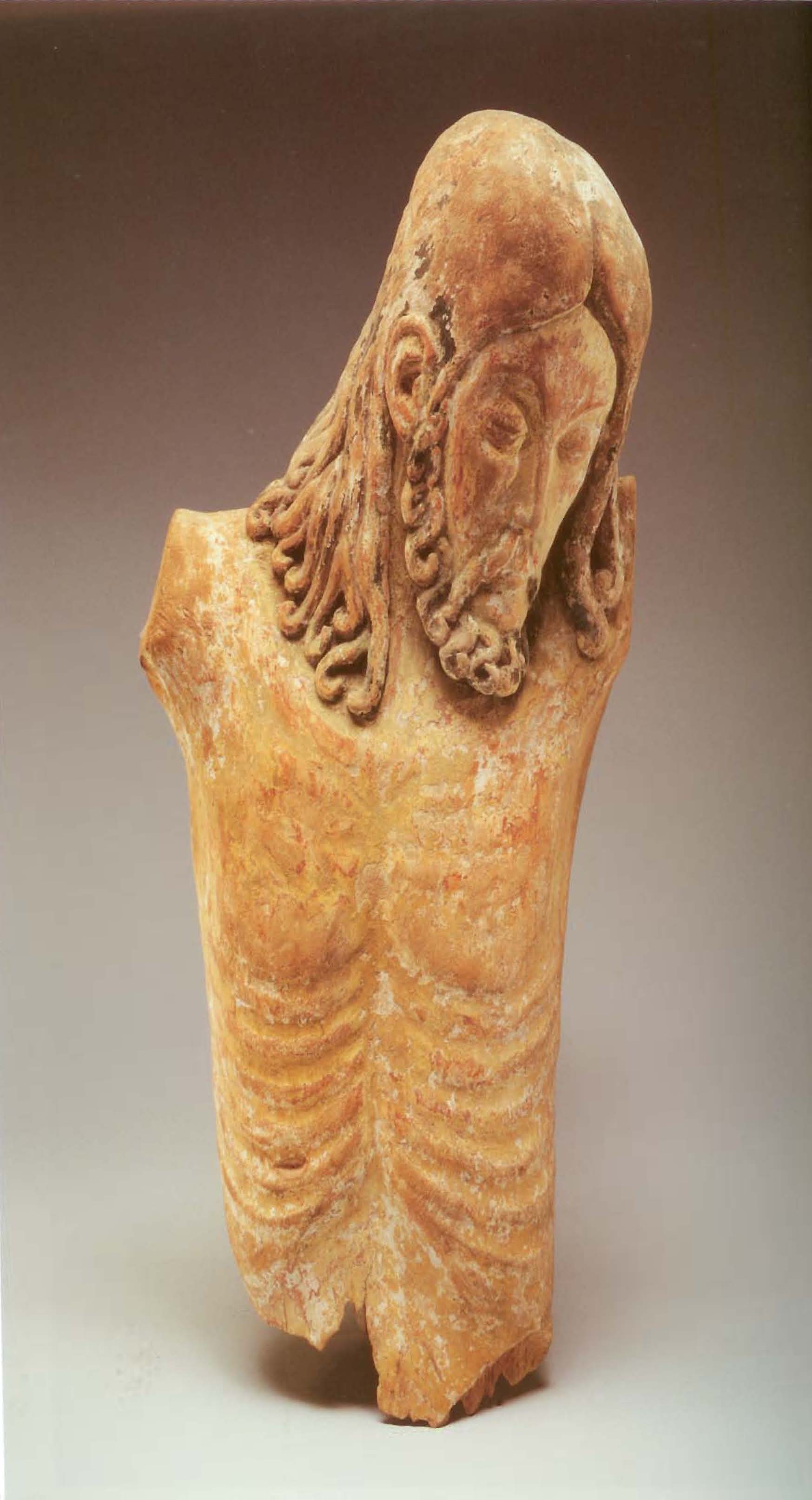Crucified Jesus, 12th-13th century
Crucified Jesus
Head and torso of a crucified Christ
Lebanon region 12th-13th century
Poplar wood, plastered and painted 43 x 20 cm
Permanent loan to the Israel Museum from Ze’ev Goldmann, Jerusalem
This powerful yet restrained depiction of the crucified Christ, of which only the head and torso remain, is the only known example of wooden sculpture from the Crusader period. Carved in poplar wood and then plastered and painted, it is remarkable for its high artistic quality. No stylistic parallels in wood exist in the Crusader States, where architectural sculpture was one of the principal artistic fields, and many fragments executed in stone by different workshops are still extant. Works from these workshops include figurative and non-figurative ornamentation from ecclesiastical and royal buildings and from tombs.
The elongated head and features of the wooden Christ relate the work to a capital with bearded heads originally from Nazareth and now housed in the Greek Orthodox Patriarchate Museum in Jerusalem. Dated to the last quarter of the twelfth century, it was attributed alternatively to a French artist or, more likely, to a local artist trained in the West or with local training under a European influence. On the other hand, the free treatment of the curls of Christ’s beard and hair in the wooden statue and its tendency towards naturalism suggests that it was made at a slightly later date, probably by a French artist working in the Northern reestablished Latin Kingdom. Carbon 14 analysis has confirmed that it was created at the end of the twelfth or beginning of the thirteenth century, in the Early Gothic period.
suggests that it was made at a slightly later date, probably by a French artist working in the Northern reestablished Latin Kingdom. Carbon 14 analysis has confirmed that it was created at the end of the twelfth or beginning of the thirteenth century, in the Early Gothic period.
The Israel Museum at 40; Masterworks of Beauty and Sanctity. Jerusalem- Israel Museum, 2005. p.28-29.




